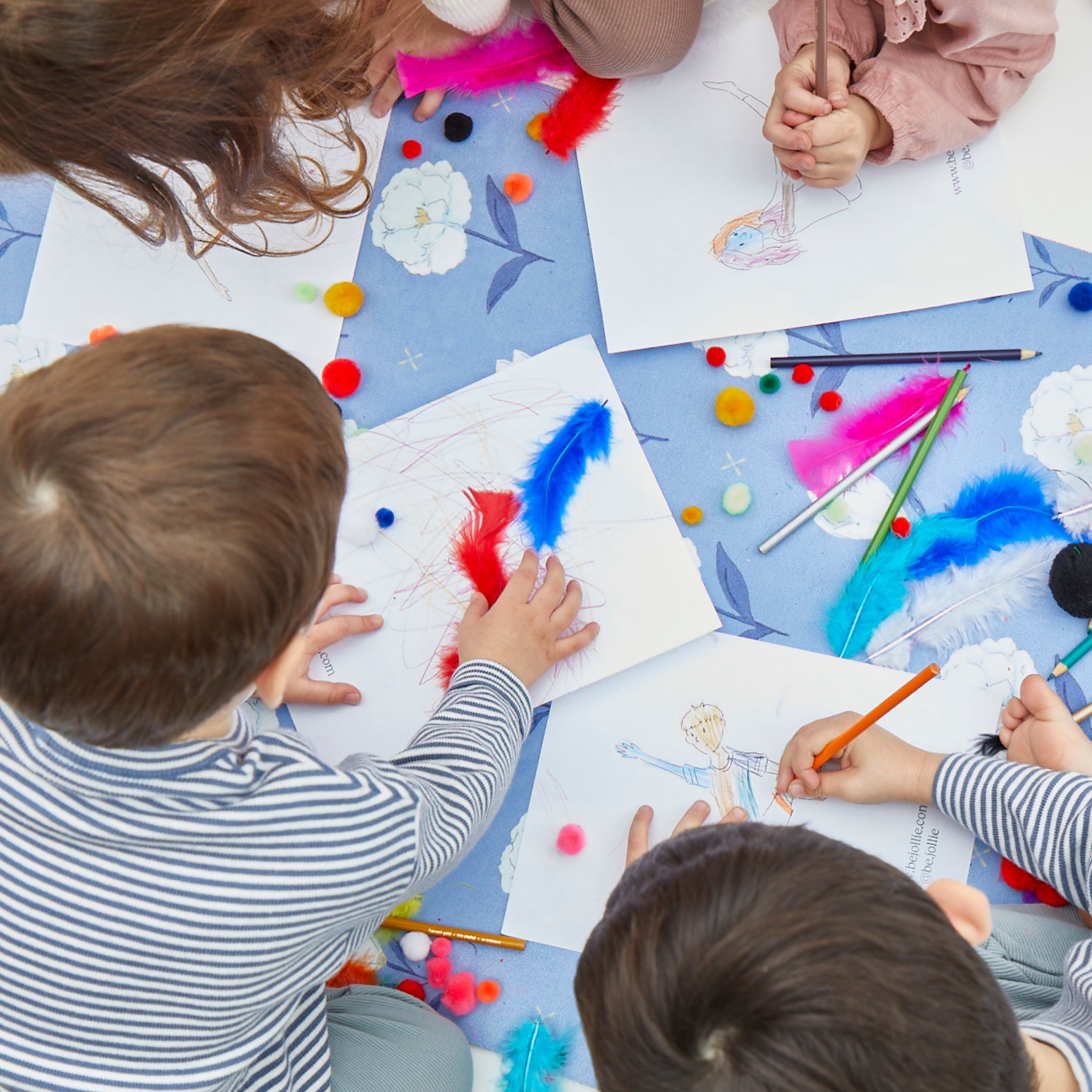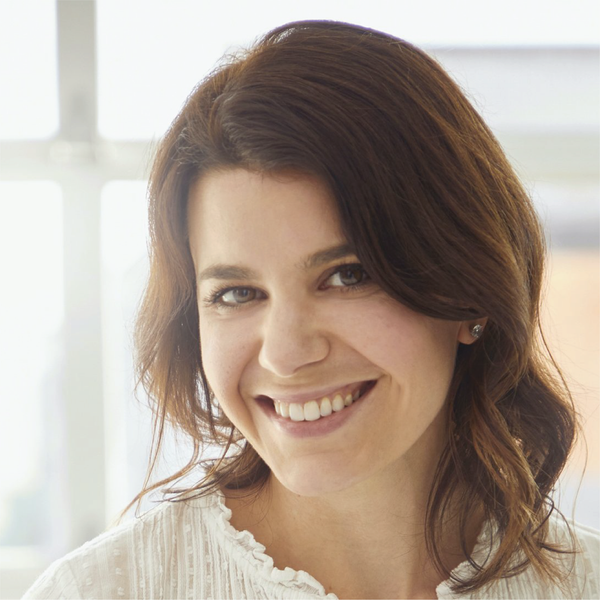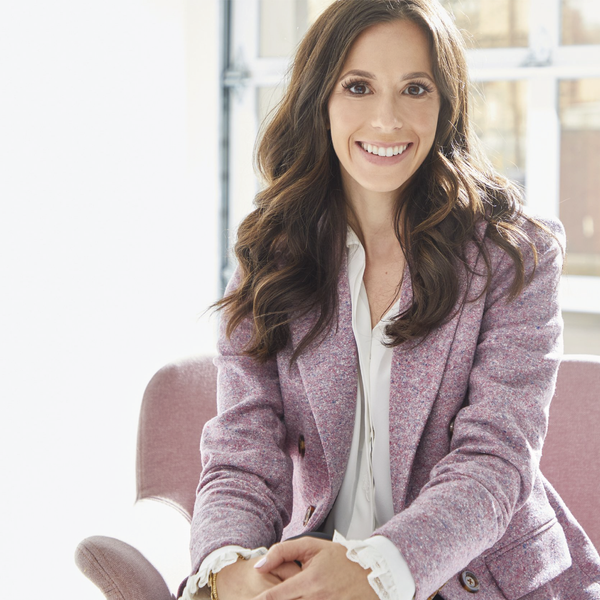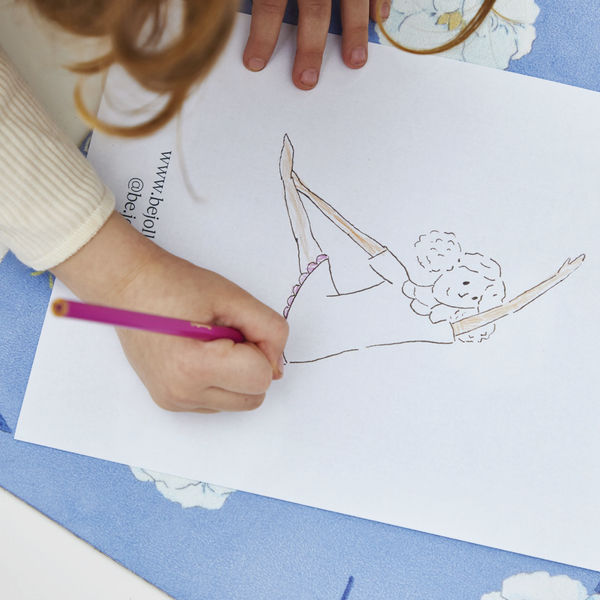Yoga in the Classroom

Incorporating Yoga & Mindful Movement in the Classroom
Bringing yoga practice into the classroom is becoming more and more popular as research shows the benefits to both children and educators. According to the American Psychological Association's 2014 Stress in America report, kids today are even more stressed out than adults. But there’s some good news, too: studies have shown that incorporating yoga, breathing, and relaxation techniques can have positive effects on stress levels, physical activity levels, academic performance, and behavior of school-aged children.
Have you ever thought about how to conduct a yoga class for school-aged children? Below are some ideas for how to prepare your classroom, when to incorporate into your daily routine, and some activities and materials you’ll need to have on hand for a productive practice.

What are the benefits to having yoga in the classroom?
In addition to the psychological and behavioral benefits, the research is very positive about academic performance where yoga instruction has been incorporated into the curriculum. In fact, test scores increased more than 18 percent and the number of students being sent to the office decreased by more than two-thirds over two years in one school where they implemented yoga in the classroom.
How can yoga be used in the classroom?
There are many ways teachers and educators can get creative to incorporate yoga and mindfulness activities into the school day and their classroom’s daily routines.
- A great way to teach yoga to children is in pairs and small groups, allowing students to work as a team to find balance and strength through teamwork.
- Starting the day with mindful movement is a wonderful way for children to connect with their classmates and teacher and ground them for a day of learning.
- Either before or after playtime, taking a few minutes for some simple yoga poses can help to re-center and re-focus your students before starting the next lesson.
- Need a pick-me-up after lunch? Create a flow full of movement to stimulate blood flow in the body while it sharpens the students’ brains as they recall the order of the poses.
- Plan along with the calendar year to have poses coordinate with the lesson plan and seasonal themes. Your yoga curriculum can be constantly refreshed when you practice a theme per season.
What are some tools to use for Yoga in the classroom?
- Our child-sized mats are made from non-amazon harvested rubber and 99.9% latex free. They come in a variety of colors and patterns to set the stage for a colorful and joyful practice.
- The Jollie Happy Kid Kit is a jam-packed set of activities, tools, and games to encourage creativity and playful movement.
- Designate a “Yoga Corner” full of mindfulness tools to practice or take a few quiet moments when needed throughout the day.

What are some fun activities to incorporate into yoga in the classroom?
Movement Games
Yoga "Simon Says"- A fun twist on the classic game, Yoga Simon Says uses yoga poses and encourages active listening. Be sure to hear “Simon Says” before you move or else you’re out!
- Toega is like yoga for your feet! Simply scatter small pom poms or other soft objects on the floor and the children try to pick them up with their toes and move them to a new location.
- Pick a pose and freeze! Children can run or dance in place to music in between poses to add additional playful movement.
- Mandala coloring pages. Mandalas are complex, symmetrical black and white designs that students can fill with markers or colored pencils. These beautiful designs are used to aid relaxation and mediation.
- Create your own mandalas with paper plates and pieces from nature (leaves, flowers, sticks, rocks)
- Yoga pose coloring pages. Included in our Happy Kid Kit, our coloring pages allow kids to create works of art as unique as they are.
- Crafting mindfulness jars. Also included in our Happy Kid Kit, we supply all the ingredients to create a mindfulness jar that soothes during quiet time (and can also be used as a timer for games)!
- Listening to music can inspire both movement and stillness. Here are a few of our favorite songs inspired by yoga for children.
- "Namaste Song"- by Kira Willey
- "Dance for the Sun", "Yoga Clock", "Yoga Makes me Happy" by Karma Kids Yoga
- "Toco El Sol" and "I am OHMazin"- by Yoginos (just like us, these artists are Houston-based)
- Great for imagination and creativity as well as language and movement, you can incorporate poses or breath work with what is happening in a story you read to the children during storytime. One of our favorite children’s books, “Breathe and Be” by Kate Coombs, is included in our Happy Kid Kit along with a special note from the author just for Jollie readers.
- Another way to incorporate yoga into storytime is to have children make up a story using poses. Everyone sits in a circle and the first person does a pose, for example Down Dog "There was a dog", and then the next person does Tree tree pose and says "and he went on a walk past a tree" continue around the circle until the story is complete. This is a great activity for small groups to work together using their creativity and imagination.
- Always needed in a classroom full of school-aged children, quiet time is a natural fit for children to practice their self-regulation skills.
- Using relaxation poses such as child’s pose or savasana, teachers can calmly guide children through breathwork and breathing techniques to slow their busy minds and bodies. This is also a natural fit to incorporate some guided gratitude practice.
Teaching Life Long Skills
The benefits of using mindful movements, breathwork, and yoga poses continue outside of the classroom as well and become lifelong coping skills students can call on when needed to self regulate. When specifically asked about using the breathing techniques they learned, 84% of students said that they used breathing techniques -- unprompted by their teacher -- and described that at least one time they used them.



